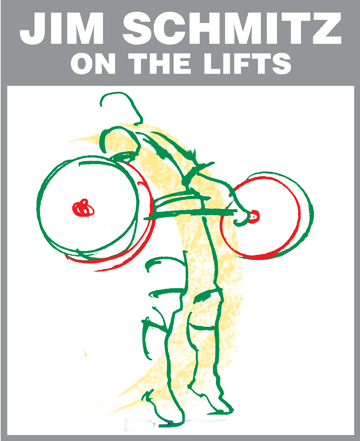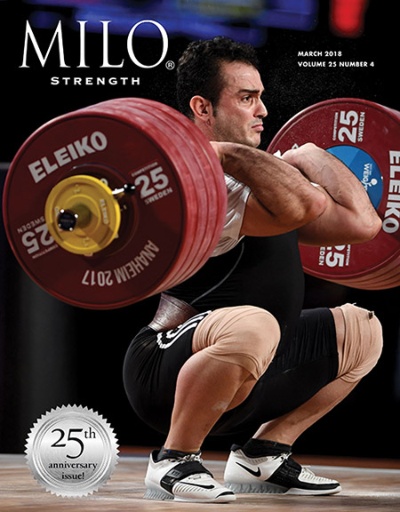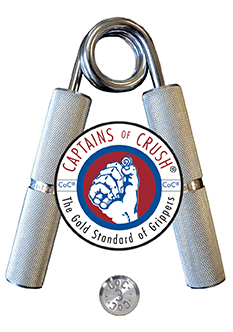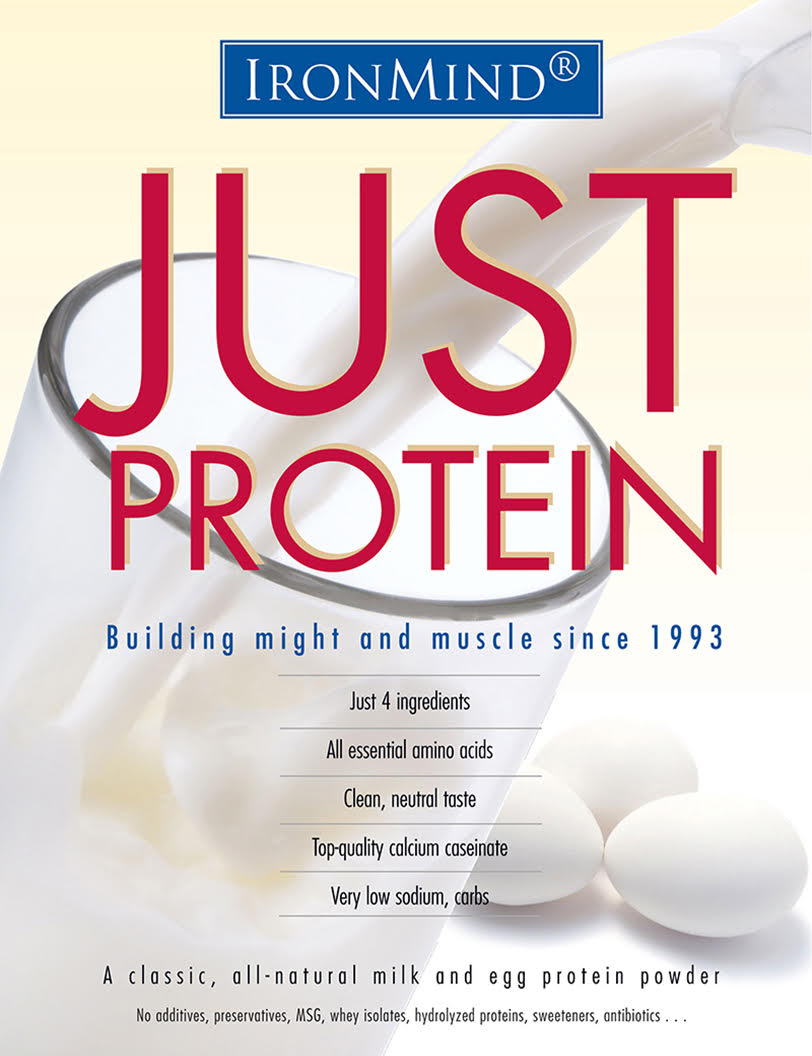
U.S. Olympic Weightlifting Team Coach 1980, 1988 & 1992 Author of Olympic-style Weightlifting for Beginner & Intermediate Weightlifters Manual and DVD
My previous "Schmitz on the Lifts" dealt with the contents of your gym bag. I will now discuss the importance of the condition of your lifting gear. I recently read John Wooden's book They Call Me Coach. John Wooden was probably the most successful basketball coach of all time: his teams won 10 national collegiate championships between 1964 and 1975. I could go on and on about him and his success, but I am referring to him here because he made a big point of paying attention to the little details.
For example, on the first day of practice he taught everyone from first-year to returning players how to put on their socks. Everyone takes for granted putting on one's socks since we've been doing it all our lives. However, John Wooden taught his players the best way to put on their socks so that there wouldn't be any wrinkles or creases that would cause blisters or discomfort that would hinder running, jumping, practice, and games. If you've ever had foot blisters, you can understand this. How you put on your socks sounds like a small detail, but it is extremely important.
Besides putting your socks on correctly, the next important detail is the condition of your shoes. I see many lifters at competitions with old, worn-down lifting shoes and it surprises me that a lifter would have trained hard for an event without taking care of his or her shoes. I have seen many lifters miss a weight because they slipped ever so slightly; two such examples are Natalie Friend at the 2007 American Open and Paul Doherty at the 2010 Nationals. Natalie missed a snatch because her foot slipped out to the side as she was standing with a weight that she had locked overhead; all she had to do was stand up, but her foot slipped outward and she lost the weight and a medal.
The same thing happened to Paul Doherty at the 2010 Nationals, only his slippage was on the jerk, which caused him to miss the weight. On both occasions I was the technical controller and the athletes complained about the platform. I checked the platform and it was fine. Then I checked the soles of their shoes and they were worn down smooth as glass and their shoes looked quite old. I told them both that they should get new shoes or get these resoled. I have seen many other instances of foot slippage causing lifters to miss a critical weight, but I didn't have the opoprtunity to check out their shoes.
A little footnote here (pun intended): I always tell my lifters to only wear their shoes for actual platform lifting. Don't wear them out on the street or for cardio, stretching, and weight training. Take excellent care of your lifting shoes and they will not let you down.
The next detail that requires attention is the condition of your shoelaces—you don't want the distraction and aggravation of them breaking when you are lacing up. Make sure they are not worn thin, and just in case have a spare in your gym bag. Also, if your shoe straps don't buckle or velcro securely, fix or remove them. If they are flapping around, you might trip or slip on them.
Now about your lifting belt—make sure it isn't worn thin anywhere, especially where it buckles. At the 1979 World Weightlifting Championships in Thessalonica, Greece, Mark Cameron, USA's 110-kg lifter, cleaned 220 kg very strongly, but as he was rising, his belt broke at the buckle causing it to fall around his feet. He was standing there ready to jerk it, but thought the lift was no good because his belt had fallen off. Because it was now around his feet, he was also worried that it might cause him to trip or stumble, so he dropped the bar. It was a second attempt so he was able to borrow a belt and make it very strong on his third attempt, but had he made it on his second, he would have tried more on his third and 225 would have been a bronze medal. If my memory serves me correctly, it was Hungary's Gyorgy Szalai, a competitor in the 100s, who lent him his belt.
Shoes, socks, belt—what else? Lifting suit. At the 1996 Olympics in Atlanta, Georgia, the Chinese 64-kg lifter had his lifting suit, but it was torn in the crotch, showing more than his muscles. He and his coaches were in a panic. One of his competitors lent him his spare lifting suit and the Chinese lifter, Xiao Jiangang, went on to win the bronze medal.
From whatever you will wear when on the competition platform to whatever you need for warm-ups and even in training, make sure it is in top shape, just as you should be. As John Wooden said, "A wrinkled sock can cost one a championship." I say, "Pay attention to and maintain your lifting gear in top shape," for the same reason.

















